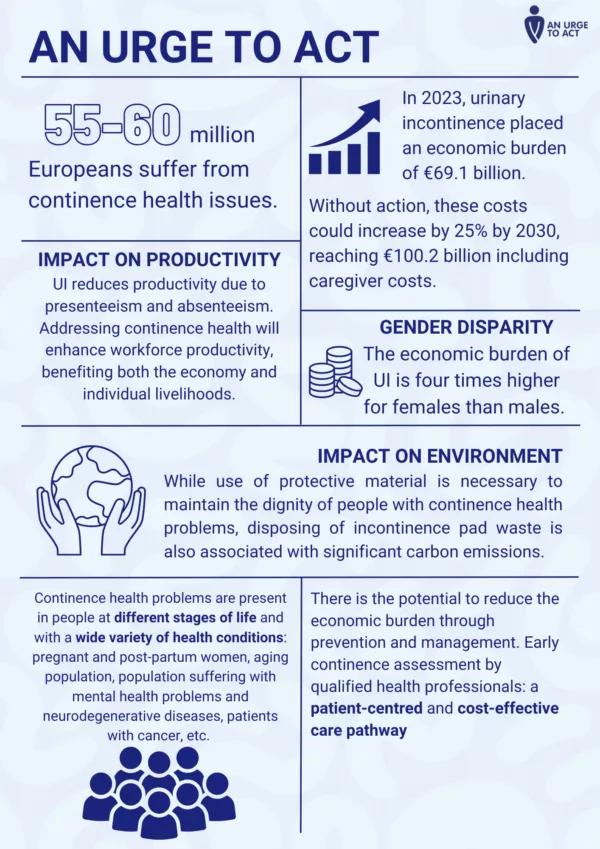Continence Health
Continence health problems are a major health issue that affects a large part of Europe’s population, on both the personal and societal levels. Currently, there is little policy attention given to improving the lives of people living with continence health problems. This not only has a significant impact on patients and their loved ones but also on national health systems, the economy, the environment and society.
Topic Leads: Philip Van Kerrebroeck and Jean-Nicolas Cornu
A socio-economic report published in European Urology in 2025, showed that in 2023, Urinary Incontinence (UI) placed a significant financial strain on the European Union, with total costs reaching an estimated €69.1 billion, before factoring in caregiver support. Women were disproportionately affected, shouldering nearly four times the economic burden compared to men. On average, each patient incurred about €1,470 annually.
When caregiver-related expenses are included, the total cost jumps to €80 billion, raising the per-person yearly cost to approximately €1,700. Looking ahead, projections suggest that by 2030, the economic impact of UI could climb to over €100 billion.
There's also a major sustainability opportunity: transitioning to full recycling of incontinence pad waste could cut the carbon footprint of continence care in Europe by nearly 118 million kilograms of CO₂ emissions in 2023 alone.
The Urge to Act
In 2023, the EAU with more than 20 organisations launched the Urge to Act Campaign, aimed at achieving substantial change in policies relating to continence health across Europe.
Also, in May 2025, the MEP Interest Group on Continence Health was launched, and the EAU acts as its secretariat.
The EAU works very closely with the World Federation of Incontinence and Pelvic Problems (WFIPP), representing the patients.
